Résultats de recherche de titre
Articles 1 à 20 sur 1437
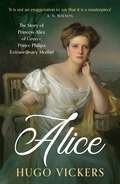
Alice: The Story of Princess Alice of Greece, Prince Philip's Extraordinary Mother
Par Hugo Vickers. 2025
The remarkable, moving story of Prince Philip's mother by eminent biographer Hugo Vickers, updated in this new edition - for…
fans of Kingmaker and The Lives and Deaths of the Princesses of Hesse'Gripping. Hugo Vickers has pulled off an extraordinary feat in describing the life - in many ways tragic - of Princess Andrew of Greece. It is not an exaggeration to say that this is a masterpiece.' - A. N. Wilson'Vickers tells this story with a sure touch and an expertise that only he can command' SUNDAY TIMES'A sympathetic, piquant and well-defined portrait of a spirited woman' LITERARY REVIEW'Sympathetic yet free of pathos, Vickers's life celebrates an unusual and fascinating woman' KIRKUS--------Princess Alice, mother of Prince Phillip, was something of a mystery figure even within her own family. Profoundly deaf, she was born at Windsor Castle in the presence of her great-grandmother, Queen Victoria, and brought up in England, Darmstadt, and Malta.In 1903 she married Prince Andrew of Greece and Denmark, and from then on her life was overshadowed by wars, revolutions, enforced periods of exile. Further crisis hit when, at the age of forty-five, she was removed from her family and placed in a sanatorium in Switzerland, where she was pronounced a paranoid schizophrenic. As her stay in the clinic became prolonged, there was a time where it seemed she might never walk free again.Yet she recovered.Illuminating and enthralling, eminent biographer Hugo Vickers's account of her life is as tumultuous and extraordinary as the times she lived through.
Alice: The Story of Princess Alice of Greece, Prince Philip's Extraordinary Mother
Par Hugo Vickers. 2025
The remarkable, moving story of Prince Philip's mother by eminent biographer Hugo Vickers, updated in this new edition - for…
fans of Kingmaker and The Lives and Deaths of the Princesses of Hesse'Gripping. Hugo Vickers has pulled off an extraordinary feat in describing the life - in many ways tragic - of Princess Andrew of Greece. It is not an exaggeration to say that this is a masterpiece.' - A. N. Wilson'Vickers tells this story with a sure touch and an expertise that only he can command' SUNDAY TIMES'A sympathetic, piquant and well-defined portrait of a spirited woman' LITERARY REVIEW'Sympathetic yet free of pathos, Vickers's life celebrates an unusual and fascinating woman' KIRKUS--------Princess Alice, mother of Prince Phillip, was something of a mystery figure even within her own family. Profoundly deaf, she was born at Windsor Castle in the presence of her great-grandmother, Queen Victoria, and brought up in England, Darmstadt, and Malta.In 1903 she married Prince Andrew of Greece and Denmark, and from then on her life was overshadowed by wars, revolutions, enforced periods of exile. Further crisis hit when, at the age of forty-five, she was removed from her family and placed in a sanatorium in Switzerland, where she was pronounced a paranoid schizophrenic. As her stay in the clinic became prolonged, there was a time where it seemed she might never walk free again.Yet she recovered.Illuminating and enthralling, eminent biographer Hugo Vickers's account of her life is as tumultuous and extraordinary as the times she lived through.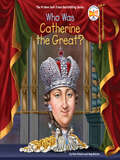
Who was catherine the great? (Who Was?)
Par Pam Pollack. 2021
Learn how a Prussian princess grew up to be Russia's longest-ruling female leader! Born in 1729, Princess Sophie of Anhalt-Zerbs…
was never supposed to come to power. But at age sixteen, she married the heir to the Russian throne. By 1762, Sophie, known now as Catherine, overthrew her immature and incompetent husband, Peter III, to lead the nation. Catherine became the sole ruler of Russia. This exciting Who Was? title explores how Catherine was able to turn Russia into one of the great powers of Europe by expanding its borders, helping improve its educational system, and advocating for the arts. Her three-decade reign is considered the Golden Age of Russia, and she is called Catherine the Great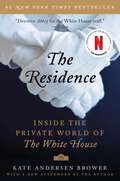
The Residence: Inside the Private World of the White House
Par Kate Andersen Brower. 2015
#1 New York Times BestsellerThe inspiration for the Netflix series premiering March 20! “A revealing look at life inside the White House. .…
. it’s Downton Abbey for the White House staff.” — The Today ShowA remarkable history with elements of both In the President’s Secret Service and The Butler, The Residence offers an intimate account of the service staff of the White House, from the Kennedys to the Obamas.America’s First Families are unknowable in many ways. No one has insight into their true character like the people who serve their meals and make their beds every day. In her runaway bestseller, former White House correspondent Kate Andersen Brower pulls back the curtain on the world’s most famous address. Full of stories and details by turns dramatic, humorous, and heartwarming, The Residence reveals daily life in the White House as it is really lived through the voices of the maids, butlers, cooks, florists, doormen, engineers, and others who tend to the needs of the President and First Family.These dedicated professionals maintain the six-floor mansion’s 132 rooms, 35 bathrooms, 28 fireplaces, three elevators, and eight staircases, and prepare everything from hors d’oeuvres for intimate gatherings to meals served at elaborate state dinners. Over the course of the day, they gather in the lower level’s basement kitchen to share stories, trade secrets, forge lifelong friendships, and sometimes even fall in love.Combining incredible first-person anecdotes from extensive interviews with scores of White House staff members—many speaking for the first time—with archival research, Kate Andersen Brower tells their story. She reveals the intimacy between the First Family and the people who serve them, as well as tension that has shaken the staff over the decades. From the housekeeper and engineer who fell in love while serving President Reagan to Jackie Kennedy’s private moment of grief with a beloved staffer after her husband’s assassination to the tumultuous days surrounding President Nixon’s resignation and President Clinton’s impeachment battle, The Residence is full of surprising and moving details that illuminate day-to-day life at the White House.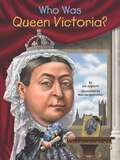
Who was queen victoria? (Who Was?)
Par Jim Gigliotti. 2017
Her reign of 63 years and seven months is known as the Victorian Era, a period of industrial, cultural, scientific,…
and political change that was marked by a great expansion of the British Empire. But Victoria was raised under close supervision and near isolation until she became Queen of the United Kingdom at the young age of 18. She married her first cousin, Albert, and had nine children who married into families across Europe. By the time she had earned the nickname “The Grandmother of Europe” and the title “Empress of India” it was indeed true that the sun never set on the British Empire. Publicly, she became a national icon, but privately, Who Was Queen Victoria?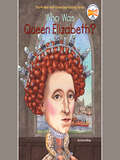
Who was queen elizabeth? (Who Was?)
Par June Eding. 2019
Our bestselling series is fit for a queen! The life of Queen Elizabeth I was dramatic and dangerous: cast out…
of her father's court at the age of three and imprisoned at nineteen, Elizabeth was crowned queen in 1558, when she was only twenty-five. A tough, intelligent woman who spoke five languages, Elizabeth ruled for over forty years and led England through one of its most prosperous periods in history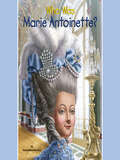
Who was marie antoinette? (Who Was?)
Par Dana Meachen Rau. 2018
From the palaces of Austria to the mirrored halls of Versailles, Marie Antoinette led a charmed life. She was born…
into royalty in 1755 and married the future king of France at age 15. By 21 she ascended to the throne and enjoyed a lavish lifestyle of masquerade balls, sky-high wigs, and extravagant food. But her taste for excess ruffled many feathers. The poor people of France blamed Marie Antoinette for their poverty. Her spending helped incite the French Revolution. And after much public outcry, in 1793 she quite literally lost her head because of it. Whether she was blameless or guilty is debatable, but Marie Antoinette remains woven into the fabric of history and popular culture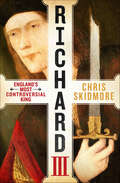
Richard III: England's Most Controversial King
Par Chris Skidmore. 2017
“A bold and fresh new biography of one of the most enduringly fascinating monarchs . . . steeped in the…
latest research and majestically narrated.” —Dan Jones, award-winning historian and New York Times–bestselling author of The PlantagenetsFrom acclaimed historian Chris Skidmore comes the authoritative biography of Richard III, England’s most controversial king, a man alternately praised as a saint and cursed as a villain.Richard III is one of English history’s best known and least understood monarchs. Immortalized by Shakespeare as a hunchbacked murderer, the discovery in 2012 of his skeleton in a Leicester parking lot re-ignited debate over the true character of England’s most controversial king.Richard was born into an age of brutality, when civil war gripped the land and the Yorkist dynasty clung to the crown with their fingertips. Was he really a power-crazed monster who killed his nephews, or the victim of the first political smear campaign conducted by the Tudors?In the first full biography of Richard III for fifty years, Chris Skidmore draws on new manuscript evidence to reassess Richard’s life and times.Richard III examines in intense detail Richard’s inner nature and his complex relations with those around him to unravel the mystery of the last English monarch to die on the battlefield.“This highly readable chronicle comprises vaulting ambition, familial betrayal, moral corruption, high politics, foul murder and a beautiful queen lusting for revenge.” —Wall Street Journal“[Skidmore's] biography bids fair to become the definitive account for the 21st century.” —Washington Independent Review of Books“A gripping, vivid, fresh portrait of Richard III.” —Simon Sebag Montefiore“A portrait that chills you to the bone.” —The Times of London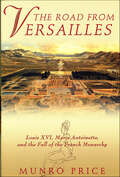
“Through brilliant detective work, Price has uncovered documents that shed a definitive light on the French Crown's policy toward the…
revolution.” —Library JournalIn acclaimed historian Munro Price's powerful new book, he confronts one of the enduring mysteries of the French Revolution—what were the true actions and feelings of Louis XVI and Marie Antoinette as they watched their sovereignty collapse?Dragged back from Versailles to Paris by the crowd in October 1789, the king and queen became prisoners in the capital. They were compelled for their own safety to approve the Revolution and its agenda. Yet, in deep secrecy, they soon began to develop a very different, and dangerous, strategy. The precautions they took against discovery, and the bloody overthrow of the monarchy three years later, dispersed or obliterated most of the clues to their real policy. Much of this evidence has until now remained unknown.The Road from Versailles reconstructs in detail, for the first time, the king and queen's clandestine diplomacy from 1789 until their executions. To do so, it focuses on a vital but previously ignored figure, the royal couple's confidant, the baron de Breteuil. Exiled from France by the Revolution, Breteuil became their secret prime minister, and confidential emissary to the courts of Europe.Along with the queen's probable lover, the comte de Fersen, it was Breteuil who organized the royal family's dramatic dash for freedom, the flight to Varennes. Breteuil's role is crucial to an understanding of what Louis and Marie Antoinette secretly felt and thought during the Revolution. To unlock these secrets, The Road from Versailles draws on highly important unpublished and previously unknown material.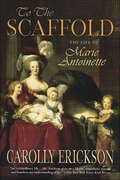
To The Scaffold: The Life of Marie Antoinette
Par Carolly Erickson. 1991
“[A] smoothly written biography” of the misunderstood eighteenth-century French queen executed during the revolution (Publishers Weekly).“An extraordinary life. . .…
. Ms. Erickson gives us a likable, empathetic women and broadens our understanding of her.” —The New York TimesBook ReviewOne of history's most misunderstood figures, Marie Antoinette continues to symbolize the glamour, the extravagance, and the decadence of French society before the French Revolution. Yet there was a poignant innocence about Antoinette, sent away in her early teens from her home in Vienna to the chillingly formal French court.Married to the maladroit, ill-mannered dauphin and condemned to childlessness by his inability to beget an heir, Antoinette sought pleasure in costly entertainments and grotesque eccentricities of dress. Along with most members of the court, she spent lavishly while her husband’s subjects, overtaxed and increasingly hostile toward their sovereign and his mismanaged government, blamed her for France’s plight and accused her of every imaginable vice.In time Antoinette matured into a capable and courageous queen, though her husband, Louis XVI, remained timid and inept at a time when France needed bold and visionary leadership. When the forces arrayed against the monarchy finally closed in, however, Antoniette followed her husband to the guillotine, an aged, white-haired widow not yet forty.In To the Scaffold, acclaimed biographer Carolly Erickson provides an unusually nuanced portrait of a lost queen, a portrait that is psychologically acute, richly detailed, and deeply moving.“Erickson brings [an] immediacy and easy intimacy to her study.” —Los Angeles Times Book Review“For lovers of history or lovers of a great romantic story, this book is a must.” —Louisville Courier-Journal
After Diana: William, Harry, Charles, and the royal house of Windsor
Par Christopher P Andersen. 2007
A decade after her tragic death, Princess Diana's influence continues to shape the British royal family, exposing deep-seated struggles over…
power, legacy, and identity. This compelling account delves into the private lives of the monarchy, revealing secrets, scandals, and the lasting impact of Diana's love and compassion on her sons as they navigate their own destinies. 2007. Adult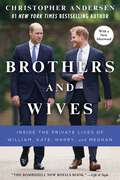
Brothers and Wives: Inside the Private Lives of William, Kate, Harry, and Meghan
Par Christopher Andersen. 2021
Featuring unreported details and stunning revelations, the long-awaited follow-up to the &“fabulous, addictive&” (Chicago Sun-Times) New York Times bestseller Diana&’s…
Boys explores the last twenty years in the lives of Princes William and Harry and the evolution of their relationship as adults, with one brother the designated heir, and the other doomed to life as the spare—perfect for fans of Netflix&’s The Crown. Diana&’s Boys revealed the powerful bond between the teenaged princes, and how it strengthened even more in the wake of their mother&’s tragic death. Now, twenty years later, Queen Elizabeth II is in her mid-nineties, Prince Charles is in his seventies, and all eyes are turned increasingly toward William and Harry again. Christopher Andersen picks up where he left off, covering everything that has happened to the brothers as they have grown up, gotten married to two remarkable women, and had children—all while facing continual waves of controversy and questions about the ways their relationship has shifted. Andersen examines how the Queen&’s behind-the-scenes maneuvering to mold her grandsons in the Windsor image after Diana&’s death, and her expectations of William as the future king, played out. He questions whether the brothers&’ famously close relationship can survive Harry&’s departure from the Royal Family—the first time this has happened since their great-great-uncle King Edward abdicated the throne to marry a divorcée. He delves into the impact sisters-in-law Kate and Meghan have had on each other as well as on their princes, and how marriage and fatherhood have changed the brothers and, in some ways, also driven a wedge between them. Andersen also looks with an honest eye at how the princes and their wives have been continuously buffeted by scandal—including headline-making allegations of bullying, racism, betrayal, and emotional abuse that has pushed more than one royal to the brink of self-destruction. Based on in-depth research and with his &“fascinating and insightful&” (The Christian Science Monitor) writing, Andersen leaves no stone unturned in this intimate and riveting look into the private lives of the world&’s most famous princes.
Tourments d'une reine, 1992-2022 (Elizabeth II #2)
Par Robert Hardman. 2023
Elizabeth Windsor n'était pas née pour être reine. Pourtant, depuis son accession au trône en 1952 à l'âge de 25…
ans, elle s'est révélée une figure astucieuse, déterminée, menant sa famille et son peuple à travers plus de sept décennies de changements sociaux sans précédent. Le journaliste, auteur et cinéaste Richard Hardman a commenté pour la BBC tous les événements majeurs de la monarchie des dernières générations. S'appuyant en outre sur de multiples documents inédits tirés des archives royales, il nous fait découvrir la survie et le renouveau dynastiques, et couvre l'abdication, la romance, le danger et la tragédie. La biographie qu'il propose ici deviendra, sans l'ombre d'un doute, la référence en la matière. Cet ouvrage nous ramène en 1926 et retrace l'enfance de la future souveraine, l'implication de son entourage dans la Seconde Guerre mondiale ainsi que le règne d'Elizabeth II jusqu'à la fin du XXe siècle, se fermant sur la période dite noire de la famille royale qui l'a vue multiplier les déboires et scandales. Signe de l'évolution des mentalités, c'est la pérennité même de la couronne britannique qui est alors menacée. Assistons-nous à l'ultime chapitre de cette lignée au prestige et au rayonnement inégalés ?
Les Borgia à Buckingham (Documents)
Par Marc Roche. 2022
Les sombres secrets de la famille Windsor, maison royale du Royaume-Uni de Grande-Bretagne et d'Irlande du Nord. L'auteur révèle les…
tensions entre Catherine et Meghan, les arrangements autour du mariage de William, les soupçons de Scotland Yard à propos de la mort de Diana ou encore les relations compliquées entre la reine Elizabeth II et son fils Charles.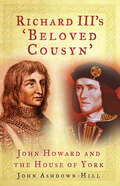
Richard III's 'Beloved Cousyn': John Howard and the House of York
Par John Ashdown-Hill. 2012
In 1455 John Howard was an untitled and relatively obscure Suffolk gentleman. Thirty years later, at the time of his…
death at the Battle of Bosworth Field, he was Earl Marshal, Duke of Norfolk, Lord Admiral and a very rich man (and his direct descendant is Duke of Norfolk today). How had Howard attained these elevations? Through his service to the House of York, and in particular to King Richard III during the setting aside of Edward V.John Ashdown-Hill examines why Howard chose to support Richard, even ultimately at the cost of his life; what secrets he knew about Edward IV; what he had to do with the fate of the 'Princes in the Tower;' and what naval innovations, hitherto ascrided to the Tudors, he promoted. Based on original research and containing previously unpublished material, Richard III's 'Beloved Cousyn' is an important contribution to Ricardian scholarship.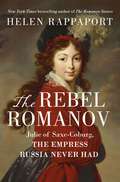
The Rebel Romanov: Julie of Saxe-Coburg, the Empress Russia Never Had
Par Helen Rappaport. 2025
From the New York Times bestselling author of The Romanov Sisters comes the story of a courageous young Imperial Grand…
Duchess who scandalized Europe in search of freedom.In 1795, Catherine the Great of Russia was in search of a bride for her grandson Constantine, who stood third in line to her throne. In an eerie echo of her own story, Catherine selected an innocent young German princess, Julie of Saxe-Coburg, aunt of the future Queen Victoria. Though Julie had everything a young bride could wish for, she was alone in a court dominated by an aging empress and riven with rivalries, plotting, and gossip—not to mention her brute of a husband, who was tender one moment and violent the next. She longed to leave Russia and her disastrous marriage, but her family in Germany refused to allow her to do so.Desperate for love, Julie allegedly sought consolation in the arms of others. Finally, Tsar Alexander granted her permission to leave in 1801, even though her husband was now heir to the throne. Rootless in Europe, Julie gave birth to two—possibly three—illegitimate children, all of whom she was forced to give up for adoption. Despite entreaties from Constantine to return and provide an heir, she refused, eventually finding love with her own married physician.At a time when many royal brides meekly submitted to disastrous marriages, Julie proved to be a woman ahead of her time, sacrificing her reputation and a life of luxury in exchange for the freedom to live as she wished. The Rebel Romanov is the inspiring tale of a bold woman who, until now, has been ignored by history.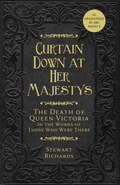
Curtain Down at Her Majesty's: The Death of Queen Victoria in the Words of Those Who Were There
Par Stewart Richards. 2019
'Her Majesty the Queen breathed her last at 6.30 p.m., surrounded by her children and grand-children.' With this notice, pinned…
to the entrance gate of Osborne House, Queen Victoria's doctors announced the death of the most powerful woman in the world, who had sat on her throne and ruled through more than six decades. Her rule had seen her kingdom spread to become the world's biggest empire, had seen massive change in society and leaps forward in technology. It is little surprise that the death of one who had ruled for all of many people's lives created chaos, shock and mass outpourings of grief across the country. Here author and researcher Stewart Richards has delved through the archives to put together the definitive view of Victoria in her final days, through the immediate reaction and aftermath of her death, to the state funeral of 2 February 1901. Based entirely on fascinating first-hand accounts, The Death of Queen Victoria offers a truly unique insight into the events of that tumultuous few days and is a volume that no enthusiast should be without.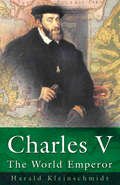
Charles V: The World Emperor
Par Harald Kleinschmidt. 2012
Charles V (1500-1558), King of Spain (1516-1556) and Holy Roman Emperor (1519-1556) is one of the most interesting and perplexing…
of the great European monarchs. The son of Philip the Handsome (son of the the Holy Roman Emperor Maximillian I) and Joanna the Mad (daughter of Ferdinand and Isabella of Spain), he became King of Spain at a time when the Valois and Habsburgs were involved in bitter disputes over northern European territories. When he was elected Holy Roman Emperor and united to the old Habsburg lands the empire of Spain, it seemed that the family might well be on the way to the universal monarchy. of Charles V it may truthfully be said that he ruled an empire on which the sun never set. he set out with high aims and ideals but found himself overwhelmed. The demands of ruling over the greatest number of territories ever accumulated by any European ruler role and the seeming impossibility of achieving peace in Europe proved too great, and the disillusioned Emperor retired to the monastery of San Yuste, where legend has it his ghost continues to advise the Spanish monarchs. This book offers a chance to see Charles against the background of turmoil and unprecedented European expansion. It is an important study in ideas of kingship and dynasty, showing the last medieval emperor defending the ideals of Christian Christendom.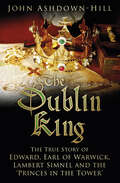
The Dublin King: The True Story of Edward Earl of Warwick, Lambert Simnel and the 'Princes in the Tower'
Par John Ashdown-Hill. 2017
**A year after Richard III’s death, a boy claiming to be a Yorkist prince appeared as if from nowhere, claiming…
to be Richard III’s heir and the rightful King of England. **In 1487, in a unique ceremony, this boy was crowned in Dublin Cathedral, despite the Tudor government insisting that his real name was Lambert Simnel and that he was a mere pretender to the throne.Now, in The Dublin King, author and historian John Ashdown-Hill questions that official view. Using new discoveries, little-known evidence and insight, he seeks the truth behind the 500-year-old story of the boy-king crowned in Dublin. He also presents a link between Lambert Simnel’s story and that of George, Duke of Clarence, the brother of Richard III. On the way, the book sheds new light on the fate of the ‘Princes in the Tower’, before raising the possibility of using DNA to clarify the identity of key characters in the story and their relationships.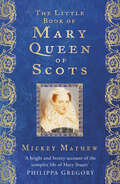
The Little Book of Mary Queen of Scots
Par Mickey Mayhew. 2015
Mary Queen of Scots is perhaps one of the most controversial and divisive monarchs in regal history. Her story reads…
like a particularly spicy novel, with murder, kidnap, adultery, assassination and execution. To some she is one of the most wronged women in history, a pawn used and abused by her family in the great monarchical marriage game; to others, a murderous adulteress who committed regicide to marry her lover and then spent years in captivity for the crime, endlessly plotting the demise of her cousin, Queen Elizabeth I of England.This book covers the breathtaking scope of her amazing life and examines the immense cultural legacy she left behind, from the Schiller play of the 1800s to The CW teen drama Reign. Temptress, terrorist, or tragic queen, this book will give you the lowdown on one of history’s most misunderstood monarchs.